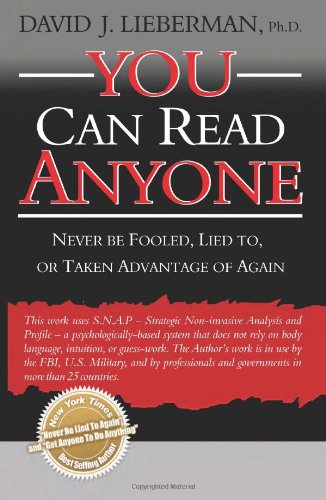موضوعات
آموزش و پرورش
ادبیات و زبان
پزشکی، دندانپزشکی و داروسازی
تاریخ و جغرافیا
داستان و رمان
دیگر
دین و فلسفه
روانشناسی
ریاضیات و آمار
سلامتی، تناسب اندام و رژیم غذایی
شیمی و پلیمر
علوم اجتماعی و حقوق
علوم زیستی و بیوتکنولوژی
فیزیک و نجوم
کامپیوتر و اینترنت
کتابهای کودکان و داستان
کسب و کار و اقتصاد
کشاورزی و دامپزشکی و غذا
معماری
مهندسی و فناوری
هنر و تئاتر
محصولات
If You're Reading This, It's Too Late - Original PDF
نویسندگان: خلاصه: he torch pierced the darknessThe torch slashed through the darknessThe torch beam sliced through the darkness like a swordThe torch beam darted – yes! – across the dark hall,illuminating a wondrous collection of antique curiosities.Finely illustrated tarot cards of wizened kings andlaughing fools . . . glistening Chinese lacquer boxes concealingspring traps and secret compartments . . . intricately carvedcups of wood and ivory designed for making coins andmarbles and even fingers disappear . . . shining silver ringsthat a knowing hand could link and unlink as if they weremade of air . . .A museum of magic.The circle of light lingered on a luminous crystal ball, asif waiting for some swirling image to appear on the surface.Then it hesitated on a large bronze lantern – once home,perhaps, to a powerful genie.Finally, the torch beam found its way to a glass displaycase sitting alone on top of a black pedestal in the middle ofthe room.‘Ha! At last!’ said a woman with a voice like ice.The man behind the torch snickered. ‘Who was it thatsaid the best place to hide something was in plain sight?What an idiot.’ His accent was odd, ominous.‘Just do it!’ hissed the woman.prologueGrasping the heavy torch tight in his gloved hand,the man brought it down like an axe. Glass shattered in acascade, exposing a milky-white orb – a giant pearl? – sittingon a bed of black velvet.Ignoring the sharp, glittering shards, the womanreached with a delicately thin hand – in a delicately thinwhite glove – and pulled out the orb.About the size of an ostrich egg, it was translucentand seemed almost to glow from within. The surface had ahoneycomb sort of texture comprised of many holes of varyingsizes. A thin band of silver circled the orb, dividing it into twoequal hemispheres.The woman pushed aside her white-blonde hair andheld the mysterious object to her perfectly shaped ear. As sheturned it over, it whispered like an open bottle in the wind.‘I can almost hear him,’ she gloated. ‘That horridmonster!’‘You’re so sure he’s alive? It’s been four, five hundredyears . . .’‘A creature like that – so impossible to make – is all themore impossible to kill,’ she replied, still listening to the ballin her hand.A small red bloodstain now marked her white glovewhere one of the glass shards had cut through; she didn’tseem to notice. ‘But now he can escape us no longer. TheSecret will be mine!’The torch beam fell.‘I mean ours, darling.’Beneath the shattered display a small brass plaquegleamed. The Sound Prism, origin unknown, it readPersons — What Philosophers Say about You: 2nd edition - Original PDF
نویسندگان: خلاصه: Can a person suffer radical change and still be the same person? Are there human beings who are not persons at all? Western philosophers, from the ancient Greeks to contemporary thinkers, gave the concept of “person” great importance in their discussions. They saw it as crucial to our understanding of our world and our place in it. Prompted by tragedy — a loved one’s descent into dementia — Warren Bourgeois explored Western philosophical ideas to discover what constitutes a “person.” The first edition of Persons — What Philosophers Say About You was the result of his search. This new second edition focuses on making this material easily available and accessible to students, and has been redesigned as an introduction to the philosophy of mind and its history, concentrating on the central concept of “person” in contemporary controversies concerning abortion, euthanasia, genetic engineering, and human rights. Bourgeois has mined Western philosophy for ideas students can apply today as technology challenges their beliefs about what we are. He then uses the concept of person to unite the various subdivisions of philosophy, applying theories of knowledge, reality and value to help students understand what we believe about ourselves. The result is a living philosophy and an “introductory text with a difference.” While the ideas of the great philosophers cannot be meaningfully summarized in one introductory text, this book provides a comparison of what many of them say about the concept of person, and will encourage students to read further.Shine: a powerful 4-step plan for becoming a star in anything you do - PDF
نویسندگان: خلاصه: USE THE SECRETS OF THE STARS From one of Hollywood's premier star-makers--a four-step plan for becoming a star in everyday life From the high school homecoming queen to Hollywood celebrities, the boss's favorite employee, or a beloved relative, there is always one person whom everyone thinks is fantastic--a person who glows with star quality. What is it about some people that makes them so special? Now Larry Thompson, one of Hollywood's foremost producers and personal managers, shows you how to use the wisdom and life secrets of the stars to shine in any arena, whether it's the career track or the social scene. You will learn to maximize personal potential, abandon self-defeating strategies, and be the magnetic, and unforgettable, presence you've always wanted to be. All it requires is utilizing four essential--and attainable--elements: Identify Your Talent: Stars are clear about what they excel in, whether it's fixing cars, taking photos, working with children, or arranging flowers Summon Your Rage: Stars have a ferocious drive to succeed--they aim in one direction and run in that direction as hard as they can Assemble a Team: All stars have supporters, mentors, advisers, and counselors Learn to be Lucky: Stars concentrate their energy on managing elements of luck they can control This fun and effective book also includes helpful work sheets and exercises, as well as compelling stories and inspiring examples from favorite celebrities, including Stephen Spielberg, George Clooney, Drew Barrymore, William Shatner, Tom Cruise, and many more.Star Wars and Philosophy: More Powerful than You Can Possibly Imagine - PDF
نویسندگان: خلاصه: The Star Wars films continue to revolutionize science fiction, creating new standards for cinematographic excellence, and permeating popular culture around the world. The films feature many complex themes ranging from good versus evil and moral development and corruption to religious faith and pragmatism, forgiveness and redemption, and many others.The essays in this volume tackle the philosophical questions from these blockbuster films including: Was Anakin predestined to fall to the Dark Side? Are the Jedi truly role models of moral virtue? Why would the citizens and protectors of a democratic Republic allow it to descend into a tyrannical empire? Is Yoda a peaceful Zen master or a great warrior, or both? Why is there both a light and a dark side of the Force? Star Wars and Philosophy ponders the depths of these subjects and asks what it truly means to be mindful of the "living force."Be Brilliant For you Teens - PDF
نویسندگان: خلاصه: Sobat, dalam kehidupan ini kita sering kali mengalamikejenuhan atau mungkin kebingungan dalam menentukan langkahkita kedepan seperti apa. Setidaknya itulah yang saya alami akhir-akhir ini tatkala pekerjaan sebagai pembicara dan penulis harusterabaikan karena pengerjaan Tugas Akhir ditambah dengantawaran akan peluang-peluang yang menggiurkan hati.Menariknya adalah saat dimana Allah punya cerita akankehidupan kita misalnya saja malam ini. Diluar dugaan, pagi tadisaya baru saja memberikan koment untuk coach saya, Pak BudiSatria Isman, CEO Sari Husada, dan tanpa di duga-duga siangnyamasuk sebuah sms di handphone saya yang berbunyi”Bio, saya sedang ada di Yogyakarta, kalau mau ketemu,saya ada waktu pukul 6.45 di Hotel Hyatt”Ini keajaiban!!. Saat kejenuhan dan kebingungan datang,Allah menghadirkan beliau, orang yang memberikan banyakinspirasi bagi saya. Akhirnya malam ini saya pun belajar banyak hallagi dari beliau. Hal yang mungkin akan terdengar seperti itu-itusaja namun tetap harus saya bagikan kepada anda semua.Dalam hidup kita sering kali terlena dan terbuai dengan pilihan-pilihan yang harus di buat namun sadarkah kita bahwa ada halpenting yang harus kita pegang dan inilah oleh-oleh dari BapakBudi Satria Isman, Sang CEO.Careers for gourmets & others who relish food - Original PDF
نویسندگان: خلاصه: re there opportunities in the food industry? I say thereare. Just fifty years ago, it was not considered a goodidea for a young person to contemplate a career in cook-ing. Agriculture, yes, but not in the preparation of food or in thefew elements that made up the food industry at that time. As anation, our interest in good food has increased dramatically, andit will continue to increase. We are no longer a nation of meat,potatoes, and apple pie eaters. We want good vegetables andfruit, good cheese, and good prepared products.How has all of this evolved? First of all, it was the passionshared by a few food enthusiasts such as Julia Child, James Beard,Craig Claiborne, Elizabeth David, and Alice Waters. All of themwere exposed to the foods of France and Italy and decided thatAmerica needed change in its eating habits. And change it hashad! Many young people today share that passion and are find-ing satisfying and rewarding careers—not just cooking, but in allparts of the food industry: writing, teaching, catering, small spe-cialized agriculture, as well as baking and candy or jam making.Five years ago would you have thought that Italian-type bis-cotti, made by small bakers, would be available in every special-ized food shop in America? Or that small farmer’s markets wouldagain be the way to get fresher fruit and vegetables? There aremany changes taking place in what we eat, where we eat, andwho provides our food. It all depends on people with a passionfor food and the will to share it with others.Chuck WilliamsFounder, Vice-Chairman of the BoardWilliams-Sonoma, Inc.Passing psychometric tests: know what to expect and get the job you want - PDF
نویسندگان: خلاصه: There are three things you have to do if you want to pass a psychometric test.No 1. perhaps the most important thing of all, is don’t panic. By the very act ofbuying this book you’ve already upped your chances of passing by a very long way.Familiarisation is the name of the game, and if you know what to expect, you can reducethe fear factor considerably.No. 2. is slightly obvious (although not to everyone) and that is to practise.It’s amazing how far you can improve your test scores with a bit of practice, especially ifyou haven’t taken many psychometric tests before.No 3. is to cheat. Well, not literally. I’m not advocating taking binoculars into thetest and stealing the other candidates answers (although it’s rather an enticing idea). Butwhat if you could find out in advance what you’ll be up against? What if you could find outexactly what type of test you’ll be taking and what the pass mark is? Surely that would giveyou the edge over all the other applicants?Not cheating at all really. Actually it’s extremely sensible, not to mention easy, andI’m going to show you how to do it.In this book I explain all there is to know about psychometric tests; what they are,what they measure, who uses them, why they’re used, how they’re changing, how tosurvive them, and even how to avoid them altogether!And because the whole point of this book is to familiarise you with the differenttypes of test and give you the chance to practice (thereby helping you improve yourperformance) I include 35 practice tests!These are not ‘made up’ tests that you sometimes see in books about psychometrics,nor are they puzzles or quizzes of the magazine variety. They are genuine practice tests fromthe biggest test publisher in the world; SHL Group plc. This is the genuine article. This is thesort of thing you’ll be facing when you apply for a job with virtually any medium–large sizecompany, irrespective of industry, whether private or public sectorYou May Now Kill the Bride (Carnegie Kincaid, Book 5) - PDF
نویسندگان: خلاصه: HAPPY B-DAY 2U!!! Doing something fun today?Physical therapy. Whoopee. Oh, sorry. I thought maybe your sister would be taking you out?She’s got enough to do taking me to doctors. Right. Well, tell her hi for me, would you? I don’t suppose she could come with you to the wedding. You haven’t RSVP’d, but you are coming, aren’t you? If you feel up to it. Let me know so I can make arrangements, OK?(No new messages . . . ) (No new messages . . . ) (No new messages . . .How to negotiate like a child: unleash the little monster within to get everything you want - PDF
نویسندگان: خلاصه: Anyone who's ever argued with a child knows that they can be incredible little negotiators. "How to Negotiate Like a Child" mixes lighthearted, tongue-in-cheek humor with eminently practical real-world strategies to show readers how to turn the tide in any adult negotiation by using kids' tactics. From throwing a tantrum, to taking your toys and going home, this unique book will make readers smile while opening their eyes to remarkably effective negotiating strategies they've never before thought to use. Techniques can be used effectively in all aspects of business, from getting a job to closing a deal and even in non-business situations - everything from trying to get an airline seat, to dealing with customer service at the phone company.Sound: Stop Faking It! Finally Understanding Science So You Can Teach It - PDF
نویسندگان: خلاصه: Muddled about what makes music? Stuck on the study of harmonics? Dumbfounded by how sound gets around? Now you no longer have to struggle to teach concepts you really don t grasp yourself. Sound takes an intentionally light touch to help out all those adults science teachers, parents wanting to help with homework, home-schoolers seeking necessary scientific background to teach middle school physics with confidence. The book introduces sound waves and uses that model to explain sound-related occurrences. Starting with the basics of what causes sound and how it travels, you'll learn how musical instruments work, how sound waves add and subtract, how the human ear works, and even why you can sound like a Munchkin when you inhale helium. Sound is the fourth book in the award-winning Stop Faking It! Series, published by NSTA Press. Like the other popular volumes, it is written by irreverent educator Bill Robertson, who offers this Sound recommendation: One of the coolest activities is whacking a spinning metal rod to create a wah-wah effect. It s a simple activity, the explanation incorporates several interesting properties of sound. This activity is in Chapter 5. I suggest you try it and see!آیا کتاب مورد نظر هنوز بر روی سایت قرار نگرفته است؟ جای نگرانی نیست! کافی است بر روی گزینه سفارش کتاب کلیک کرده و درخواست خود را ثبت کنید. در کمتر از چند ساعت کتاب شما را آماده خواهیم کرد.









